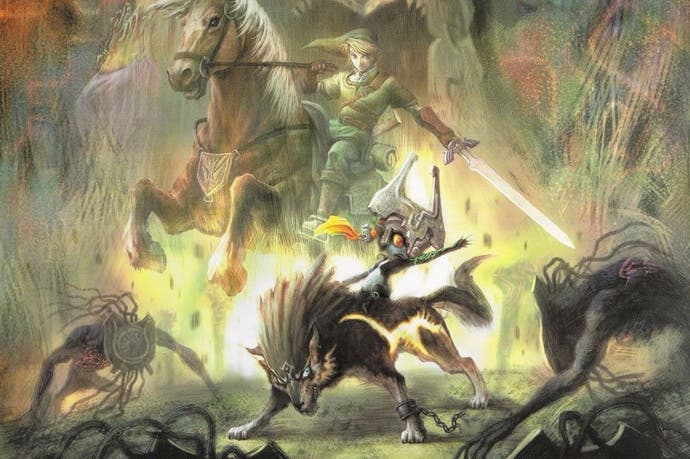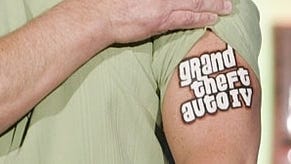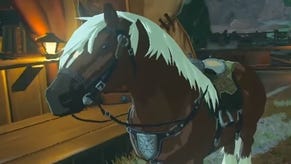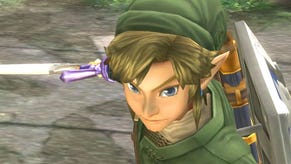The Legend of Zelda: Twilight Princess HD review
Midna-tier.
It's enough to give you goosebumps, even today. There's an endearing nuttiness to the shrill enthusiasm that met The Legend of Zelda: Twilight Princess' reveal at E3 in 2004, the excitement building to a crescendo of raw hysteria by the time Shigeru Miyamoto stood proud on stage mimicking Link's heroic pose, shield in one hand and sword in another with his smile as wide as it's ever been. It's a snapshot of fandom at its most intoxicating, and its most powerful; this is what happens when you give the faithful what they want.
Twilight Princess has always had its own strange place in the Zelda canon, a multi-million dollar apology to the vocal critics of its immediate predecessor on Nintendo's GameCube. Following an understated reception for The Wind Waker, work on a direct sequel to that game was halted, its colourful vibrancy swapped out for the same gritty read of Tolkien that Peter Jackson was making fashionable with the Lord of the Rings films at the time. Here was the darker, more physical take on The Legend of Zelda that was briefly glimpsed when the GameCube was first properly unveiled in 2000; here was the spiritual successor to Ocarina of Time that people had been clamouring for.
After the heady expanse of the open sea and the invigorating lungfuls of salty air offered by Wind Waker, director Eiji Aonuma returned to familiar terra firma with Twilight Princess. Playing Twilight Princess today via Australian developer Tantalus' handsome HD remaster for the Wii U - especially so soon after Nintendo's own Wind Waker remaster - can be enlightening. The contrast between the two is stark; if those rolling oceans and all that wild-eyed wonder saw the series at its brightest, then Twilight Princess is Zelda at its most gloomy. It's a world painted in Stygian tones, where the themes of corruption that have long been the mainstay of the series are now played with a more sinister edge. It's a fairytale told with a snarl on its lips.
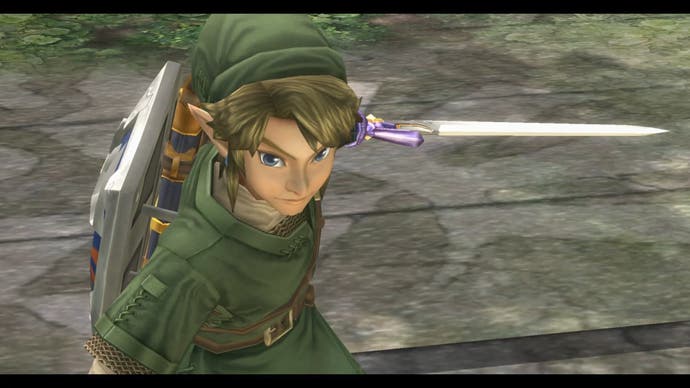
You'll find that same snarl on the lips of Wolf Link, the creature our hero morphs into once he's pulled into the Twilight Realm, a nightmarish netherworld scored by what sounds like several angry fax machines. Duality has played a role in several Zeldas past - from Link to the Past's dark world to Ocarina of Time's twin eras - yet here it's played out in Link himself, who goes from rangy adventurer with sword in his hand to lithe wolf, gamely pouncing around small mobs of faceless shadow creatures in combat.
You'll find, too, more aggression in the greater emphasis that's been placed on the fighting itself in Twilight Princess, the swords clashing with spite while the hit-pause of Wind Waker has been imbued with a new sense of menace. This is a Zelda that slowly expands Link's vocabulary, layering in new moves as the game progresses and offering combat that, while never truly challenging, can still run satisfyingly deep. It's enhanced, too, by horseback combat that fulfils a fantasy Zelda players had had ever since Epona was introduced, with scraps that run across the considerable expanse of Hyrule, swords clashing and arrows flying as horned Bulblins with furious faces tumble under rushing hooves.
You'll also find melancholy seeping into every corner of the land. The overworld of Hyrule itself is often encased in the darkness of the Twilight Realm, yet even once liberated it's still cast in an autumnal light. In those bruised peach skies and yellowing grass you can feel the chill of a summer dying as winter rolls in. Twilight Princess doesn't quite have the twisted mischievousness of Majora's Mask, another notoriously downbeat Zelda, instead offering a softer, more muted tone.
In Midna, Link's companion throughout the game, there's perhaps the perfect example of Twilight Princess's sombre, adult outlook. An impish grimalkin, she's a constant presence whose nagging, unlike that of Navi, her counterpart from Ocarina of Time, has character and charm thanks to the ambiguity with which she's painted. Mischievous with a welcome dash of menace, she's the heart of Twilight Princess: a sin-eater who bears the weight of the land on her shoulders yet carries it all with a spring in her step. In a series that's busy with memorable characters, Midna still stands out as one of its finest creations.
Twilight Princess is defined by more than its darkness, however, and the playful tone of Zelda is upheld by a brilliant supporting cast. There's Malo, the frowning infant who casts aspersions from when you first meet him in the village of Ordon to when he's running his own improbable empire of shops; Ooccoo, the plucked chicken with an unsettlingly human face who offers assistance throughout each dungeon; Yeto, the warm-hearted yeti you board down Snowpeak Mountain with on a frozen leaf, and who takes each fresh ingredient for the soup he's concocting with a heavy, playful shove.
He's part of Twilight Princess' finest dungeon, and one of the series' very best: a half-abandoned stately home, where thick red carpets and grand oaken doors are frosted in ice while the Yeti couple that have taken residence there sit at its heart in the warm glow of its fireplace. It's an effective detour from the Zelda script, a domestic backdrop that feels steeped in its own gentle tragedy, and one that feels like much more than an elaborate environmental puzzle.
Yet, for all those moments of levity and imagination, this still feels like a Zelda cast firmly in shadow. As a response to those who wanted another Ocarina of Time, Twilight Princess can sometimes feel overstated; the wild west undertones of the N64 game are now made explicit in Link's backstory and his origins as a capable wrangler in his peaceful hometown of Ordon, and by the time Epona turns up it feels more like a full-blown apology than a statement of creative intent.
The Hyrule you take to is large enough to accommodate the range of your steed, but this is scope without any sense of purpose. It's a wide-open space with not quite enough to fill it, and even the new HD textures aren't enough to rescue it from feeling lifeless and flat. It's a problem the more realistic approach of Twilight Princess was always going to face, especially when placed next to the timeless art of Wind Waker. Tantalus has worked wonders with the original, and the result is a frequently beautiful game, even if it still feels very much a product of its age.

This remaster, too, finds itself torn between the two versions of the original. Originally intended for the GameCube, Twilight Princess was also brought over to Nintendo's Wii to bolster its launch line-up, gaining a selection of motion controls in the process. It's the GameCube original that this Wii U remaster is most faithful to - Link remains left-handed, though you can choose to play a Hero Mode where enemies hit harder and the game world is flipped as in the Wii version - with the motion controls only half-heartedly mimicked through the Wii U GamePad's gyro sensors.
It's an oversight that renders this remaster far from definitive - while Amiibo support that introduces an all-new challenge mode (which, sans Amiibo, we were unable to test) seems like poor recompense. Elsewhere, Tantalus has refined some of the mechanics, making slightly less stringent demands on players in Twilight Princess's opening hours. It's a significant step in the right direction, though it doesn't stop progress in this 60-hour epic feel anything other than glacial. Wind Waker is often - and understandably - criticised for its truncated length. In contrast Twilight Princess, with its abundance of dungeons and diversions, can feel generous to a fault.
When Twilight Princess launched in 2006, the faithful were placated with what was widely acclaimed at the time as the best Zelda yet - a true successor to Ocarina of Time, maybe even more than its equal. Its standing since then has diminished rapidly, and this accomplished remaster may help restore a little glory to a game that finds the series at its most expansive, with its most refined dungeons, even if it's also Zelda at its most conservative. The ingredients are all there for one of the very best Zelda games; this remaster confirms, though, that it lacks that all-important sense of adventure. Maybe that's what's lost when you give the fans what they want.
